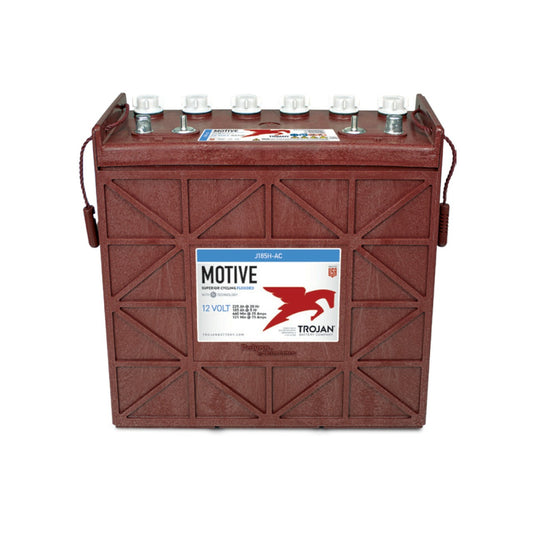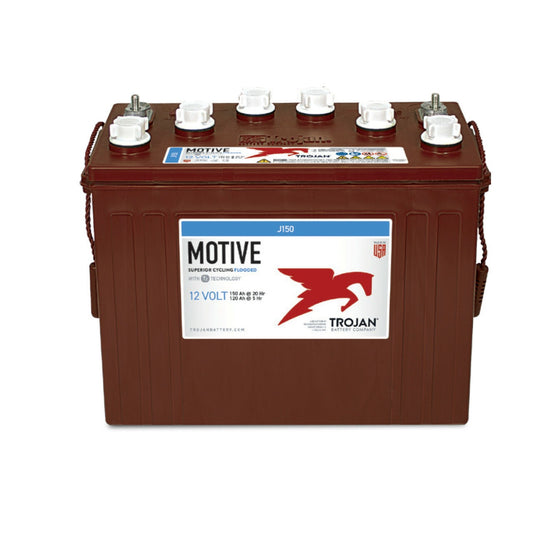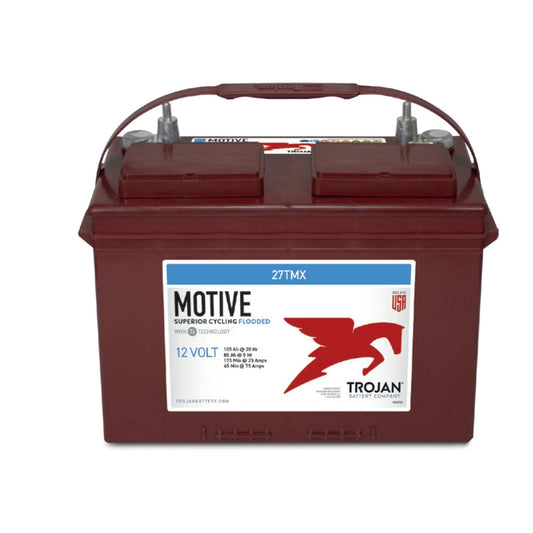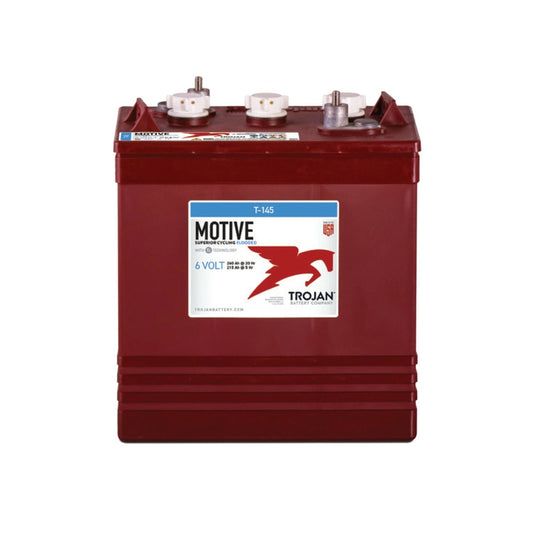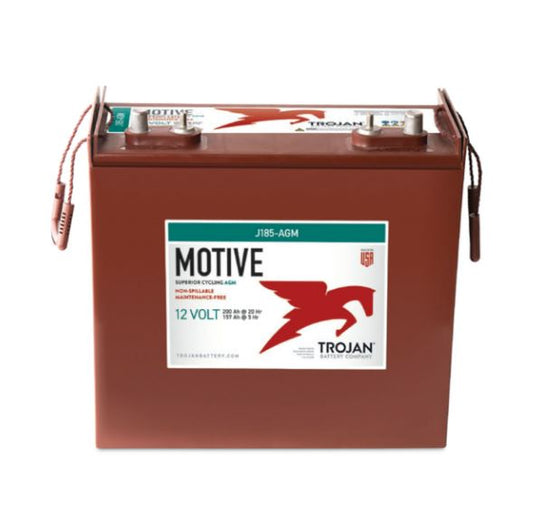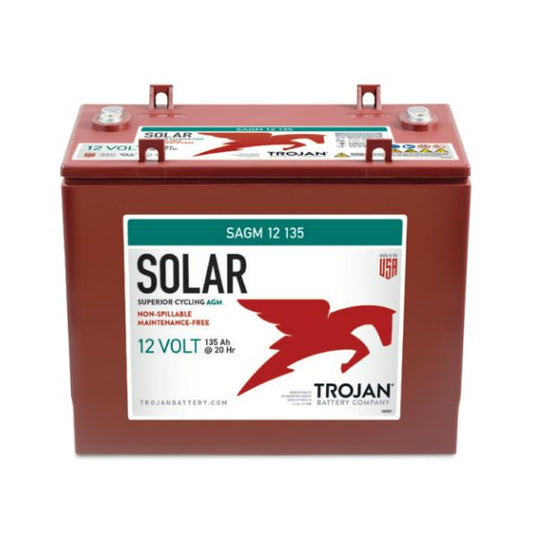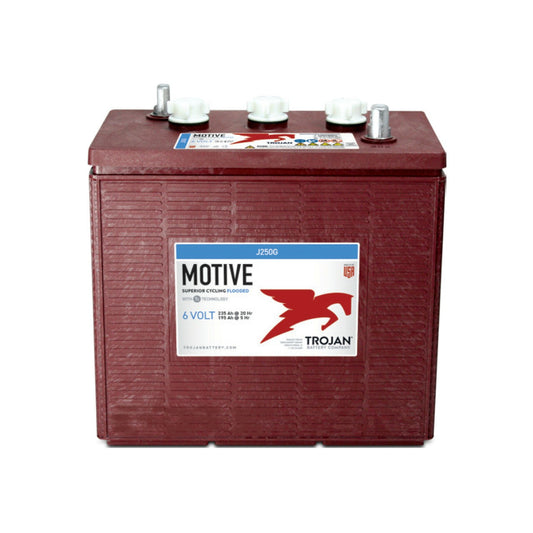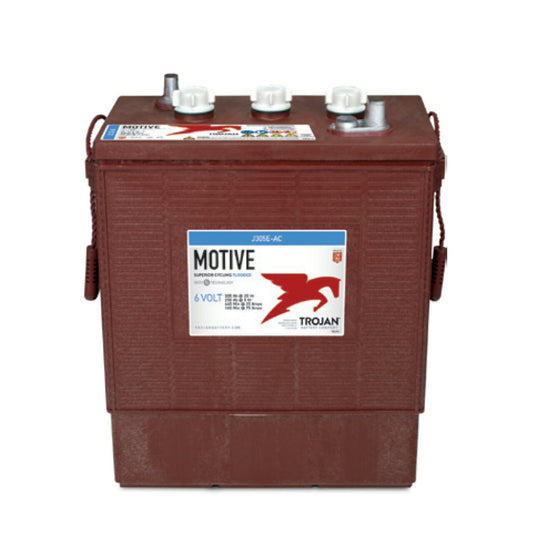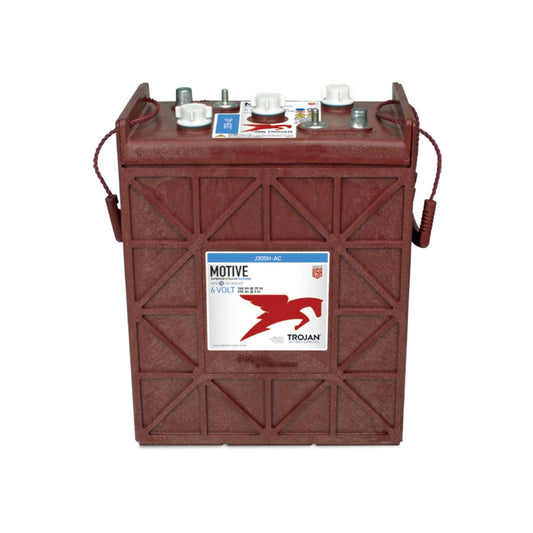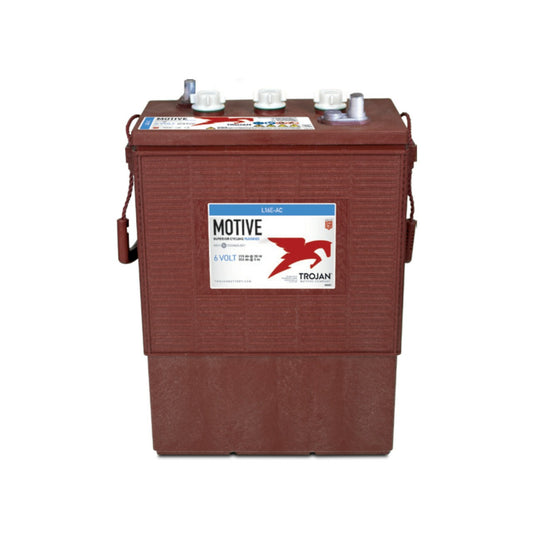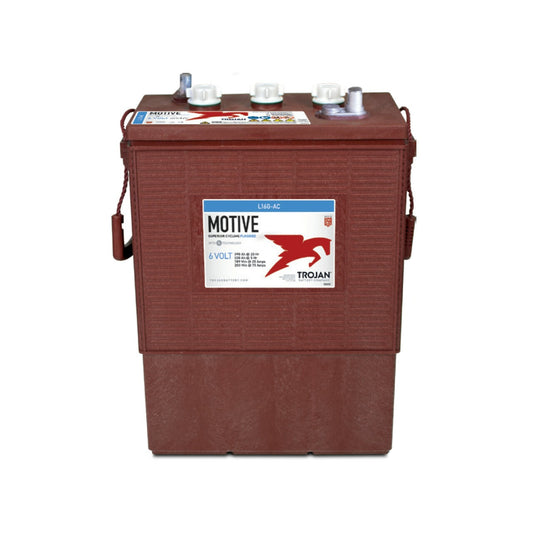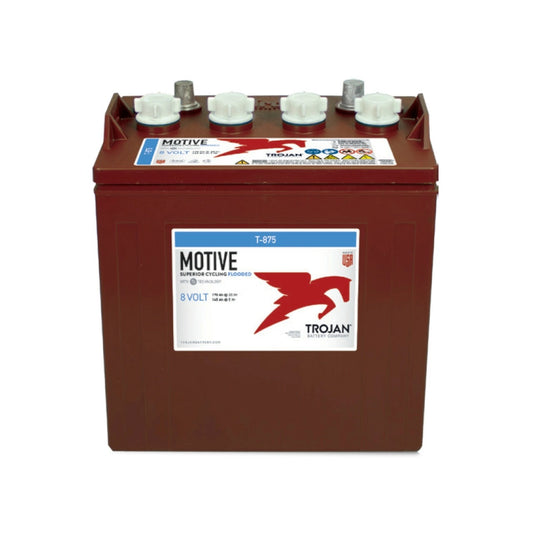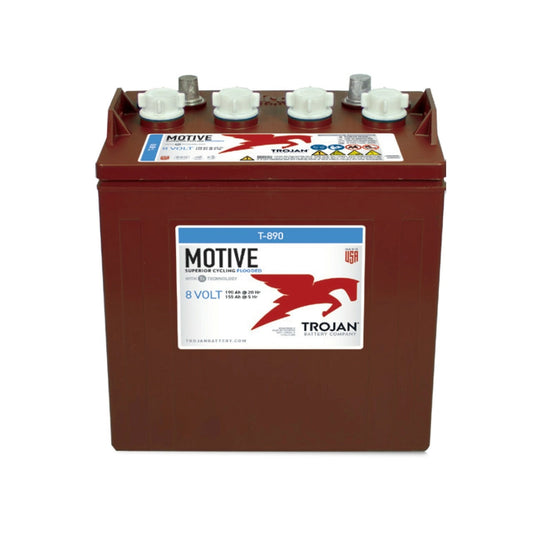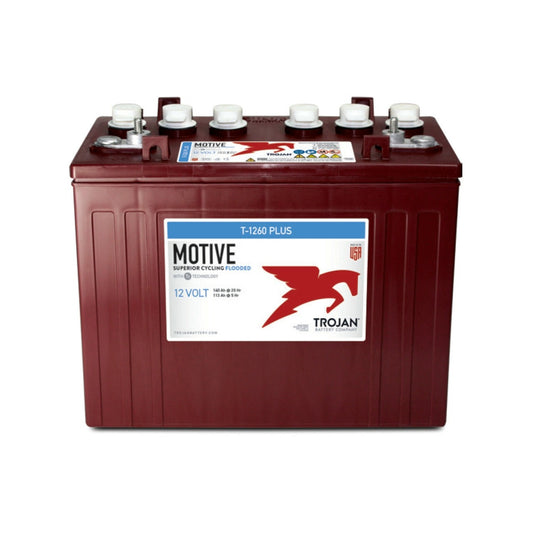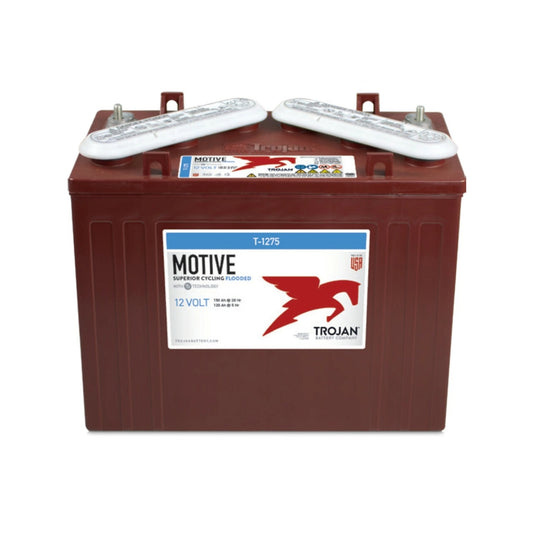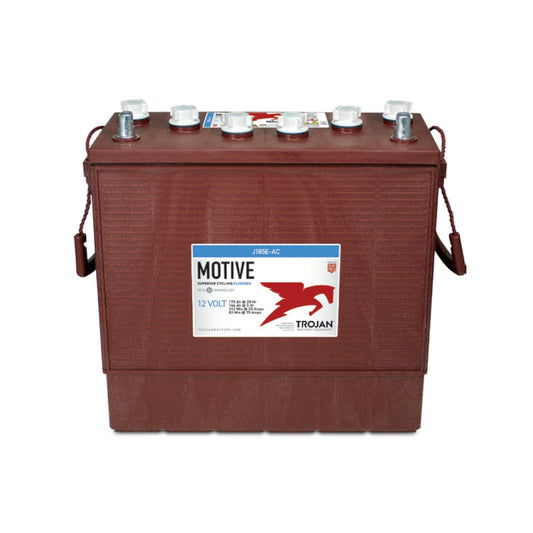Applications
AERIAL WORK PLATFORMS
FLOOR CLEANING MACHINES
MARINE & BOATING
RECREATIONAL VEHICLES
Terminal Types

SimilarProducts
Create a Custom Solar Kit
With our do-it-yourself solar kits, you can save thousands of dollars on solar panel installation. Solarkitdepot walks you through system design and installation so you can install your system with confidence.
How do I select the right number of batteries for my cart?
Many factors will go into choosing the correct setup for your unique cart. Factors that must be considered are:
- Motor controller size
- • Drive motor size
- • Oversized tires or aftermarket gearing
- • Accessories using battery power (lights, radios, etc.)
How does temperature affect the performance of my battiers?
Generally, the battery performance is directly related to temperature. Charging and discharging minimum and maximum temperatures are listed above in our spec sheet.
Is there a maximum temperature for discharging my batteries?
All Trojan Lithium-Ion Batteries will disable both charge and discharge functions when the internal battery temperature exceeds 140°F (60°C) or falls below -4°F (-20°C).
If discharge functions are disabled, they will be restored automatically when the internal battery temperature is between 14°F (-10°C) and 131°F (55°C).
How long will this battery last?
This Trojan Lithium-Ion Battery has an expected life of at least eight years or 4,000 cycles to 70% depth of discharge. Expected life is per manufacturer guidelines.
What is the range in miles I can expect on one or more batteries connected in my cart?
How do I select the right battery for my application? Proper battery selection may require the assistance of a knowledgeable battery sales/service technician. Contact your local Authorized Trojan DeaaFor a standard golf cart (3.5 HP motor and 250A motor controller), two batteries will go for 30-45 miles, whereas three batteries are good for up to 60 miles. One battery (not generally recommended except in lite use cases) will go for less than 30 miles with one person in the cart and no additional load in the cart.
Actual driving range will vary depending on factors including, but not limited to, load, terrain, temperature and equipment.ler or call us at 1-800-423-6569 or 562-236-3000.
What are the differences between a deep cycle battery, a starting battery, and a dual-purpose battery? A deep cycle battery has the ability to be deeply discharged and charged many times during its service life. It is designed specifically for powering electrical equipment for long periods of time. An automotive or starting battery is designed for brief bursts of high current and cannot withstand more than a few deep discharges before failure. This is why you can't start your car if you accidentally leave the lights on more than a few times. For applications where both engine starting and light deep cycling are required, a dual-purpose battery is often used. This type of battery is neither a starting nor a deep cycle battery but rather a compromise between the two that allows it to perform both functions adequately. Only deep cycle batteries should be used in renewable energy applications.
What’s better 24 volt or 48 volt systems? Systems with loads greater than 100 watts continuous will be better served by higher voltages such as 24V and 48V due to the reduced size of wiring required to minimize voltage drop, which impacts overall system cost and ease of installation.
Why do manufacturers use different alloys in their batteries (lead calcium, lead antimony, lead selenium, etc.)? The composition of the plate grid alloy can have a major effect on operating characteristics, such as behavior on float charging and cycle life. Older lead antimony designs have good cycling capability but require frequent water additions, particularly towards the end of life, due to antimony migration between the plates. Cells with lead calcium alloys require far less watering, but tend to have a poor cycle life. Lead selenium alloys are actually low-antimony types with the addition of selenium as a hardening agent. Such alloys promote good cycling capability, while maintaining a constant and fairly low level of water consumption. Many variants on these alloy types are commercially available.
How many batteries can I connect in parallel?
Up to ten (10) Trojan Lithium-Ion Batteries can be used in parallel.
When do I need to use a spacer battery?
In most applications, you will not need a spacer battery to install Trojan Lithium-Ion Batteries with the existing hold-down brackets. Spacer batteries are needed when a battery hold-down cannot be properly secured to the desired number of battery cases installed.
As an example, if three48V Lithium-Ion Batteries are being installed for a desired application, but the hold-down bracket requires a fourth battery for support, then one additional battery case (spacer battery) is needed to complete the installation.
Is this compatible with all golf carts?
This Trojan 48V Lithium-Ion Battery is compatible with nearly all 48V golf carts that use GC2-sized batteries. The exact configuration of the GC2 48V needed may vary depending on modifications made to the vehicle and the user's intended application.
Golf carts with on-board computers that control charging or voltage may require programming or a separate battery charger for optimum performance.
What's different about installing lithium-ion batteries vs lead acid?
Installing Trojan 48V Lithium-Ion Batteries is very similar to installing a lead-acid battery with a GC2 case. The most important difference is that the GC2 48V should only be connected in parallel with other GC2 48V batteries. They should never be connected in series and they should not be connected to any other battery type.
When replacing flooded lead acid batteries, ballasts may be needed because of the difference in weight and center of gravity. See the Trojan GC2 48V Lithium-Ion Battery User's Guide.
One unique feature of the GC2 48V is the ability to put the battery into
*Sleep* or *Storage* mode. This is recommended during installation because it will eliminate voltage to the terminals, making installation safer.
Can I connect 12V accessories to a lithium-ion battery?
The Trojan GC2 48V Lithium-Ion Battery is a 48V unit, so 12V accessories cannot be connected directly to it. A Voltage Converter (also known as a Voltage Reducer) should be used to allow the use of 12V accessories on a 48V system. When these converters are used, it is recommended that the 48V connections are made from the first and last battery in the parallel configuration for optimum balance.










